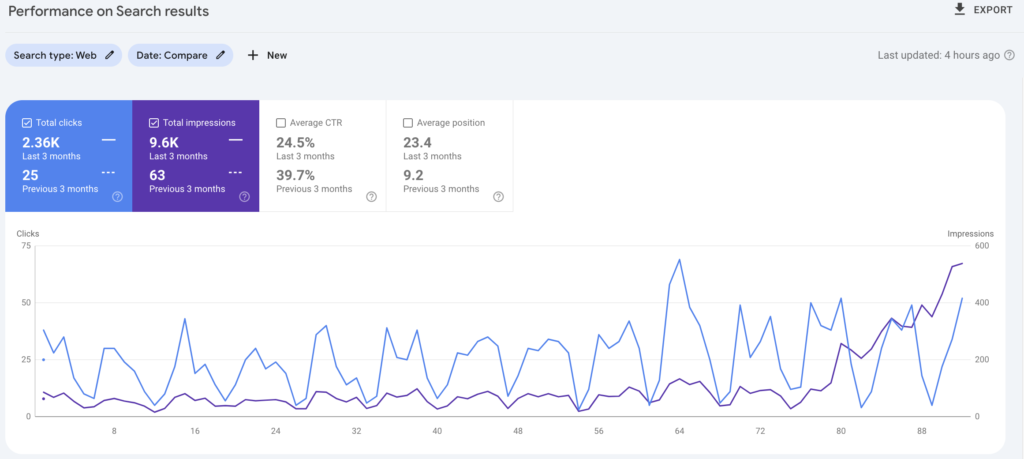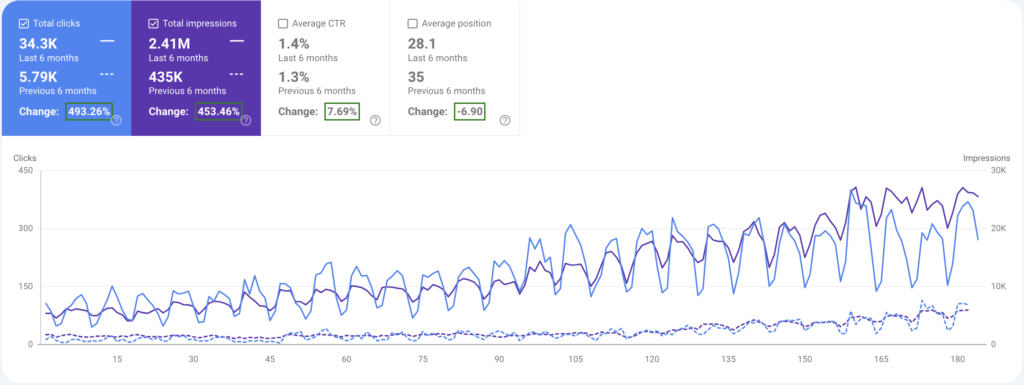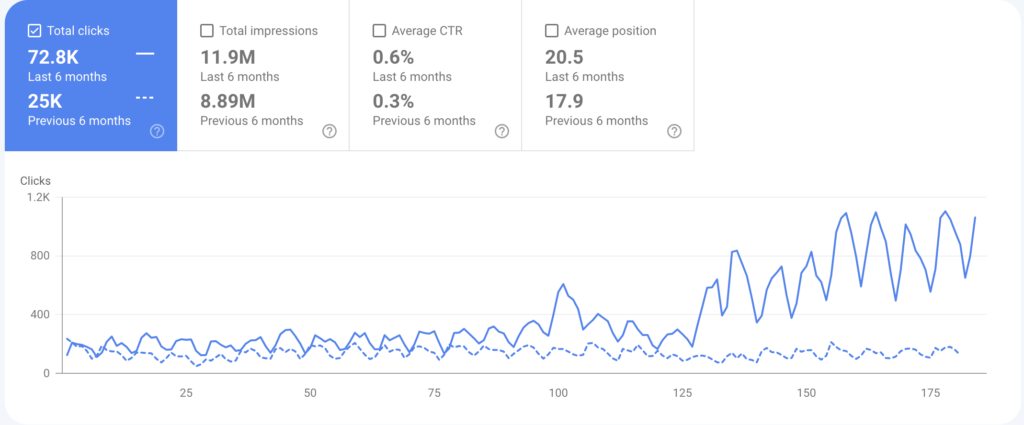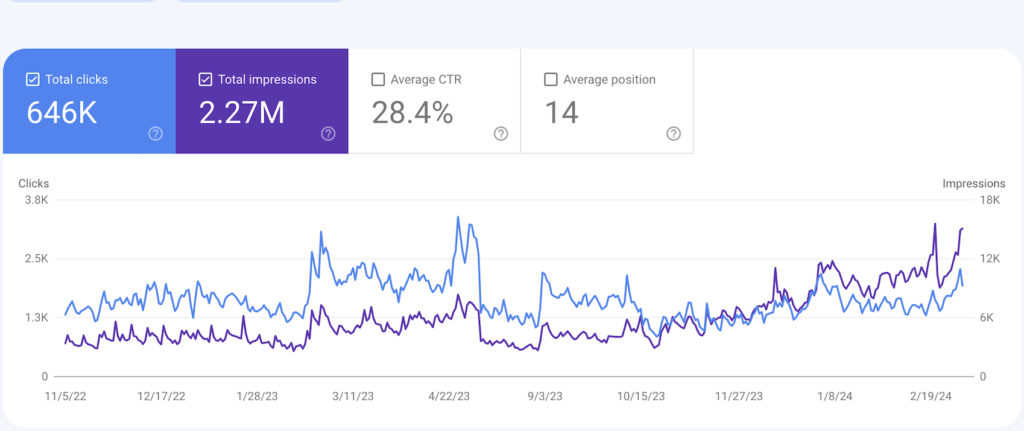Did you know people leave a website if it takes longer than three seconds to load? That’s over half your visitors gone, just like that. And even if your content is great, it won’t matter if Google can’t find it.
A lot of businesses miss out because their websites aren’t fast, easy to use, or optimized for search engines. Maybe your content isn’t answering the right questions or hitting the keywords people search for.
Here’s the good part: you can fix all of this.
At ThriveCraft SEO, we tackle two big things: Technical SEO and Content SEO. We make your site fast, easy to crawl, and perfect on mobile. Then we pair that with content people want to read and that ranks well too. This mix makes your site show up on Google and keeps people interested when they find it.
Let’s start with a Free SEO Audit. We’ll find the problems, fix them, and show you how to get more traffic, and better rankings.
Definition – Technical SEO
Technical SEO fixes your website’s tech issues to boost search engine rankings. It makes your site load faster, easier for search engines to explore, and simple to understand.
It’s part of on-page SEO, where you improve stuff on your site, like content and structure. Off-page SEO is the opposite. It focuses on building your site’s reputation through backlinks and other outside methods.
Definition – Content SEO
Content SEO helps your website rank higher in search results. It focuses on a specific keyword people search for online. To create it, you research keywords, write content, and use strategies to bring more organic traffic to your site.
Core Differences – Technical SEO vs. Content SEO
When it comes to SEO, there are two sides of the coin: Technical SEO ensures your website runs smoothly and gets discovered by search engines, while Content SEO creates valuable content that attracts and engages your audience. Here’s a simple breakdown of how they work together to boost your site’s success.
| Aspect | Technical SEO | Content SEO |
| What it is | Fixes your website’s backend so search engines can find it. | Creates great content so people and search engines love it. |
| Focus | Speed, structure, and usability of your website. | Writing helpful, engaging, and keyword-rich content. |
| Goal | Make your site easy for search engines to crawl and index. | Attract visitors and keep them engaged. |
| Key Tasks | – Boosting page speed- Adding SSL- Fixing errors- Creating sitemaps | – Writing blogs- Adding keywords- Optimizing titles and descriptions |
| User Impact | Helps users by making the site load fast and work smoothly. | Answers users’ questions and solves their problems. |
| Tools | Google PageSpeed, Search Console, Screaming Frog. | SEMrush, Ahrefs, Grammarly, Surfer SEO. |
| Challenges | Needs technical skills to set up and maintain. | Requires creativity and deep understanding of the audience. |
| Why You Need It | Lays the foundation for SEO success. | Brings traffic and builds authority over time. |
| How They Work Together | Technical SEO helps search engines find your content. | Content SEO gives them something valuable to rank. |
Both are essential. Think of Technical SEO as the engine and Content SEO as the fuel that makes your SEO strategy run. You need both to win!
Importance of Technical SEO for Website Health
Search engines notice your website when it runs smoothly thanks to technical SEO. It’s all about how users and search engines interact with your site behind the scenes. This is why it’s important:
1. Makes Your Website Faster
No one likes a slow website, right? Pages that load quickly make users happy and stop them from leaving early. Plus, search engines love speed.
- Compress images to save space.
- Use caching to load pages faster.
- Cut down server response times.
2. Helps Search Engines Crawl and Index
Search engines need to find your pages to rank them. Technical SEO ensures they can do it easily.
- Organize your site with a clear structure.
- Use robots.txt and XML sitemaps the right way.
- Fix broken links and pages so nothing gets missed.
3. Makes Your Site Mobile-Friendly
Most people browse on their phones now. If your site doesn’t work well on mobile, you’re losing out.
- Use a responsive design that adjusts to any screen size.
- Keep it easy to navigate, even on tiny screens.
4. Keeps Your Website Secure
Security matters to both users and search engines. Sites with HTTPS (SSL certificates) are safer and rank better.
5. Fixes Duplicate Content
Duplicate content confuses search engines. Technical SEO solves this with canonical tags, so only the right version of your page gets ranked.
6. Improves Core Web Vitals
These are key performance stats Google cares about:
- Largest Contentful Paint (LCP): How fast your page loads.
- First Input Delay (FID): How quickly users can interact with it.
- Cumulative Layout Shift (CLS): How stable your layout is while loading.
7. Fixes Broken Links
Broken links are annoying for users and bad for your site’s authority. Regular checks help you fix or redirect them to keep everything working.
8. Adds Structured Data
Structured data helps search engines understand your content better. It can even make your results stand out with rich snippets (think stars, reviews, or FAQs).
9. Organizes your Website
A clear and logical layout makes it easy for users and search engines to find what they need. Internal links connect everything, so no pages get left out.
10. Supports Growth Over Time
Regular checkups keep your site healthy. Fix small issues before they become big ones. Plus, you’ll stay ready for search engine updates.
It helps users have a great experience and gets your site noticed by search engines. When you invest in it, you’re setting yourself up for long-term success online.
What is the Role of Content SEO in Organic Traffic Generation?
You can increase traffic to your website without spending a dime on ads when you use content SEO. Here’s a breakdown.
1. Gets Your Website Found on Google
When you use the right keywords, Google knows what your page is about. This makes it easier for people searching for those topics to find you. Show up on the first page? You’re good to go.
2. Brings in the Right People
The right traffic is what SEO is all about, not just any traffic. People already searching for what you offer are more likely to click on your site and stick around. Win-win.
3. Makes You Look Like an Expert
When your content is helpful and well-written, people trust you. Google does too. This can lead to backlinks (other sites linking to yours) and boost your reputation online.
4. Keeps Visitors Interested
Good content keeps people reading, clicking, and exploring your site. The longer they stay, the more Google thinks, “Hey, this site must be useful!” That can help your rankings even more.
5. Attracts Backlinks
When you create content worth sharing, other websites link to it. These backlinks act like votes of confidence, helping your site rank higher.
6. Answers Real Questions
If your content solves problems or answers what people are asking, they’ll keep coming back. Google loves it when you’re helpful and rewards you for it.
7. Gets Better with Time
Regularly updating your content keeps it fresh and relevant. It shows Google you’re active and worth showing to searchers.
The bottom line? Content SEO and optimized blog strategies connect your website to people who need what you offer. Focus on clear, valuable content, and you’ll see the results.
How to Integrate Technical SEO and Content SEO Strategies
You need to integrate technical SEO and content SEO if you want better rankings and more traffic. To make both work together, follow these steps:
1. Start with Strong Technical SEO
Make sure search engines can easily crawl and index your site.
- Site Structure:
Keep things organized. Use a clear layout with a proper hierarchy. Add breadcrumbs to help users and improve internal linking. - URL Optimization:
Use short, easy-to-read URLs with keywords. Fix duplicates with proper canonical tags. - Mobile-Friendly Design:
Use responsive design so your site works on any device. Test it with Google’s Mobile-Friendly tool. - Site Speed:
Make pages load fast. Compress images, use caching, and set up a CDN. Clean up your code too. - Secure Browsing (HTTPS):
Get an SSL certificate. It makes your site safer and boosts your rankings.
2. Do Smart Keyword Research
Find the right words people are searching for:
- Use tools like Ahrefs or SEMrush.
- Group keywords by intent:
- Informational (people looking for answers).
- Navigational (finding something specific).
- Transactional (ready to buy).
- Focus on keywords that fit your content and what users need.
3. Combine Content with Technical SEO
Make your content SEO-friendly without ignoring the technical stuff.
- Schema Markup:
Add structured data for FAQs, reviews, or recipes. It makes your content pop on Google. - Headings:
Use H1, H2, and H3 tags to keep your content organized. - Internal Links:
Link-related pages naturally. Update your sitemap regularly. - Image Optimization:
Use descriptive alt texts with keywords. Compress images to load faster. - Meta Tags:
Write catchy meta titles and descriptions. Keep them unique for every page.
4. Make Sure Your Site Gets Crawled and Indexed
Help search engines understand your site.
- Use robots.txt to manage what they can crawl.
- Submit an XML sitemap in Google Search Console.
- Fix broken links (404 errors) and redirect chains (301/302).
5. Use Content to Boost Technical SEO
Keep improving your pages.
- Update old posts with fresh info and better keywords.
- Fix thin content by merging or expanding weak pages.
- Use pillar-cluster models. Write one main topic page (pillar) and link it to related subtopics.
6. Audit Regularly
Stay on top of technical issues and performance.
- Check for broken links, slow pages, or crawl errors every month. Tools like Screaming Frog or SEMrush can help.
- Track content performance in Google Analytics. Look for bounce rates, time on the page, and other engagement metrics.
7. Work as a Team
Get your content writers and SEO experts on the same page.
- Share keyword data with your developers.
- Train teams to understand how technical SEO and content connect.
8. Track Progress and Improve
Keep an eye on rankings, traffic, and user engagement by using essential SEO tools.
- Use tools like Google Analytics and Search Console to find gaps.
- Update strategies when algorithms or user trends change.
When technical and content SEO work together, magic happens. Your site will rank higher, load faster, and make users happy. That’s what you want, right?
Mistakes to Avoid in SEO Strategy
Let’s talk about SEO. It’s one of those things that sounds tricky, but it doesn’t have to be. A lot of people mess up the basics without even knowing. Let’s break it down for you:
1. Copy-Pasting Content
What’s Wrong: If you’ve got the same or super similar content on multiple pages, search engines don’t know which one to rank.
How to Fix It:
- Pick the best version and use a canonical tag to tell Google.
- Combine duplicate pages into one.
- Write content that’s unique on every page.
2. Overloading with Keywords
What’s Wrong: A page with too many keywords feels unnatural. Search engines notice. People hate it too.
How to Fix It:
- Write like you’re talking to a person, not a robot.
- Use your main keyword where it fits, titles, headings, maybe a few times in the text.
- Don’t force it.
3. Your Site Loads Slow
What’s Wrong: A slow website drives people away. No one waits around for pages to load.
How to Fix It:
- Make your images smaller (but still clear).
- Get rid of junky code.
- Check your speed with tools like Google PageSpeed Insights and fix what’s slowing you down.
4. Your Site Isn’t Mobile-Friendly
What’s Wrong: If your site looks messy on a phone, people leave fast. Google sees that and lowers your rank.
How to Fix It:
- Make your site responsive so it works on any screen.
- Test it on your phone and a few others to be sure.
- Use Google’s Mobile-Friendly Test to double-check.
5. Bad Titles and Meta Descriptions
What’s Wrong: Titles and descriptions are like your first impression. If they’re boring or missing, people skip your site.
How to Fix It:
- Write titles that are short, clear, and grab attention (about 50-60 characters).
- Keep descriptions short too (around 150 characters).
- Add keywords, but don’t make them awkward.
6. No Internal Links
What’s Wrong: If your pages don’t link to each other, it’s harder for people (and Google) to find everything on your site.
How to Fix It:
- Link to other pages on your site when it makes sense.
- Use text that tells people where the link goes.
7. Forgetting Alt Text for Images
What’s Wrong: If your images don’t have alt text, you miss out on helping Google understand them.
How to Fix It:
- Add a short description for every image.
- Use a keyword naturally if it fits.
8. Use of Weak Anchor Text
What’s Wrong: If your links just say “click here,” no one knows what they’ll get. Search engines don’t either.
How to Fix It:
- Write anchor text that explains what the link is about.
- Example: Instead of “click here,” say “learn about SEO tips.”
9. Ignoring Local SEO
What’s Wrong: If your business serves a specific area, people nearby might not find you online.
How to Fix It:
- Add location-specific keywords to your pages.
- Set up your Google My Business profile.
- Ask happy customers to leave reviews.
10. Broken Links Everywhere
What’s Wrong: Clicking a broken link is annoying, and search engines don’t like them either. Fixing them increases your website’s DA.
How to Fix It:
- Use a tool to find broken links (try Screaming Frog).
- Fix them or use a 301 redirect to send people to the right page.
That’s it! Fixing these common mistakes can make a big difference. SEO doesn’t have to be hard. Start with these tips and you’ll be on the right track.
Hire ThriveCraft SEO for Expert SEO Services
Your website should work for you, not against you. If it’s slow, clunky, or nowhere to be found on search engines, you’re losing visitors and customers. Our aim at ThriveCraft SEO isn’t just to patch up the problems. Our goal is to help you grow your business.
Here’s how we do it:
First, we make sure your website is fast, secure, and easy to navigate for both people and search engines. That’s the technical stuff.
Next, we focus on content, creating posts and pages that answer real questions, show up high on Google, and keep your visitors interested. This combo? It brings the right people to your site and helps turn them into loyal customers.
We’ve worked with businesses like yours to drive more traffic, improve rankings, and grow in a way that lasts.
Our strategies? Proven. Custom-made for your goals. Our SEO team goes beyond just SEO. Partnering with us means we are equally committed to your success.
Start with a Free SEO Audit. We’ll find the problems and give you a plan to fix them. Let’s make your website powerful with ThriveCraft SEO.
Frequently Asked Questions (FAQs):
Can You Rely on Content SEO Without Technical SEO?
Nope, you can’t. Content SEO brings traffic, but technical SEO makes sure your site runs smoothly for search engines and users.
How Do SSL Certificates Enhance Technical SEO?
They keep your site secure with HTTPS, which search engines love. It also builds trust with your visitors.
How Do Internal Links Benefit Content SEO?
They guide visitors to useful pages and help search engines understand your site’s structure.
How Often Should You Perform an SEO Audit?
At least every six months. Do it more often if you’re making big changes to your site.








